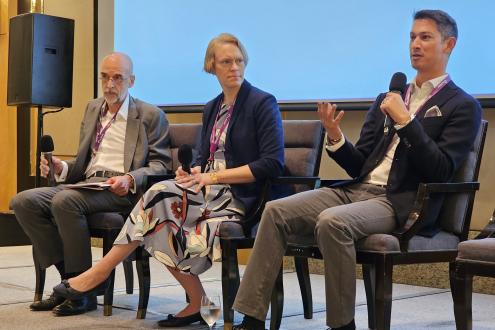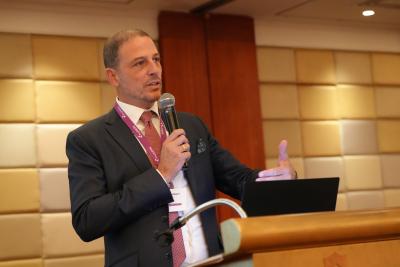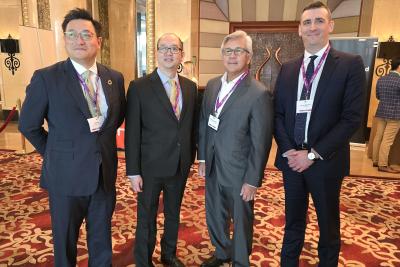The Development of the Independent Wealth Management Model in Asia
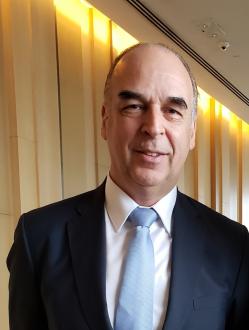
Kees Stoute of EFG International
May 22, 2023
Why has the independent wealth model in Asia been evolving so well? Where has the independent wealth proposition come from and where is it heading? These and other questions were put to a small, select group of speakers in a Q&A at the Hubbis Philippines Wealth Management Forum in Manila on March 22.
Head-to-Head Interactive Q&A
Chair
Kees Stoute
Regional Private Banking Chief Operating Officer
EFG Bank
Panel Members
Jessica Cutrera
President
Leo Wealth
Philipp Piaz
Partner
Finaport
Chair, Kees Stoute: We have here two very senior and highly regarded representatives of the independent asset management [IAM] community in Hong Kong and Singapore respectively. Both are founders of Association of Independent Asset Managers in Singapore and Hong Kong. Let me first ask Jessica how you define an independent wealth management business.
Jessica Cutrera: So, for someone who doesn't have any familiarity with the industry, this is the way I often describe an IAM. It is an advisory firm and offering that strives to look after the best interests and needs of private clients as a fiduciary, and who could work with their existing financial relationships. The IAM is there to help you and your family make the relationship with your bank better. IAMs do not take custody, we do not hold assets, we do not have our own bank or brokerage platform.
We are entirely independent in our advice, so we can work with a very wide range of banks, insurance platforms, brokerage firms, to help our clients build out the best solutions for their total wealth because we are paid by the client and not a product or platform. We have a true vested interest in building out the right solutions for our clients. The IAM is the advisor who is fully independent from your custodians, and your banks, and who is going to help you make that relationship better.
Chair, Kees Stoute: Philipp, you represent one of the first IAMs in Singapore. What do you see as the proposition and how has it evolved over time?
Philipp Piaz: Well, first of all, what is and IAM or external asset manager (EAM) as it is also known? I think Jessica was very clear in her views. I can only add that in the private banks, the bankers are definitely on the sell side, selling the bank, selling products to clients, and whether those are right for them in the end or not for them that obviously remains open.
But clearly, when you are at an IAM or EAM you are paid by the client, you switch to the other side of the table, you become buy side. There is no bias from targets or incentives from the paymaster that used to be the bank. It is now all in line with the client’s interest. Aligned interests between the IAM and the client, that is really one of the core principles of what an IAM or an EAM should represent.
As to the evolution of this IAM space since the very early years around 14 years or so ago, the numbers have grown steadily from just a handful, year on year. I would say the growth has been solid but not explosive. Clearly the model has become more and more attractive now. We see more and better education of clients and of banks and of bankers alike. Education is fundamental, and it is not only the clients but also the bankers who need to know exactly what we do.
Bankers coming to IAMs need to understand that it is not just the same model as the banks but at independent firms. The transactional or churning model is not for the IAMs. Their clients might have got used to the idea that they were not paying their bankers, when actually the banks have been receiving retrocessions or trailer fees.
The IAMs however, do not adopt the transaction or churning model and strive to be totally transparent with clients as to fees and retrocessions, so the clients end up paying knowingly and willingly for good quality, independent advice that are free from these contradictions. We are selling advice, service and solutions, not products.
As people actually are more aware of that, I feel the professionalism in the industry has increased, helped considerably by Hubbis events such as these that highlight the characteristics and value of the IAMs both in Singapore and also in Hong Kong. This all really helps to raise the bar in our industry.
Chair, Kees Stoute: Jessica, and then Philipp, what would you add as to other pros and cons of the IAM model?
Jessica Cutrera: I prefer to focus on the positives and one of the fundamentals of running an IAM, or EAM – and actually now frequently called a multifamily office - is the flexibility in that relationship.
Clients can work with their advisors in a very wide range of ways. They can use them for full discretionary asset management, they can use them for advisory, they can use them for tax or wealth planning, for insurance. Depending on the expertise of the particular IAM, it can be a really diverse offering and a very flexible relationship.
This is not a ‘con’ but a world of advice to clients to make sure the IAMs they work with is adequately resourced internally or has relationships with enough other outside expertise and resources. When this IAM business first came out in Asia you would find IAMs who really only worked with one bank, so you were getting some independence but you were still really tied to one bank. But today most IAMs are very well diversified in their relationships and the types of services they offer, and it is those clients should be working with.
Overall, I think almost any family, any investor regardless of size, demographics, or net worth can really benefit by working with an independent advisor.
Philipp Piaz: I can add that clearly banks are partners to the IAMs, it has to be a symbiosis. There is no such thing as an IAM that can survive without a bank, because we need custodians. We need access to products, research and a host of other support. Banks such as EFG have that commitment to working flexibly and proactively with the IAM community to everyone’s mutual benefit, including elevating the client proposition of course.
The IAM model means the RMs and leaders of the firms are much more on your own. You do not have all the teams behind you as in a bank. We have a tea, but it is lean and each decision is taken with commitment and responsibility, and that means we must be more entrepreneurial and not just happy being a soldier in a big corporation. So we attract and need the types of people who will stand on their own and who are genuinely ready to enter in a symbiotic partnership with their clients. It must be in their DNA.

Regional Private Banking Chief Operating Officer at EFG International
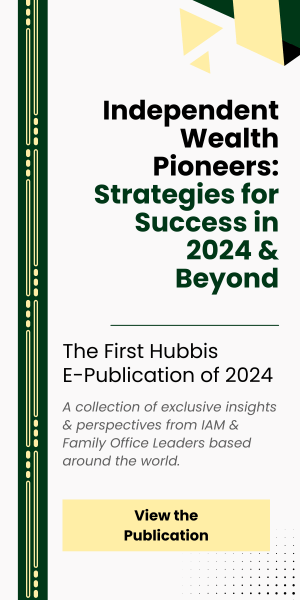
More from Kees Stoute, EFG International
Latest Articles


